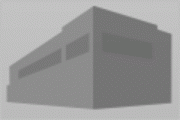Pelvic Health
Many women suffer from pelvic floor disorders—they just may not talk about it as much as they would other health problems. We encourage you to talk about these problems, not only with other women but with our team, too. From lifestyle changes and physical or occupational therapy to surgery, we offer a variety of options to help you find relief
Pelvic Floor Dysfunction and Disorders
Pelvic floor muscles are a group of muscles located at the base of your pelvis. They play a crucial role in supporting your pelvic organs, including the bladder, bowel, and reproductive organs. These muscles help control important bodily functions like urination, bowel movements, and sexual activity. When these muscles are not functioning properly it can lead to conditions like:
- Chronic constipation
- Frequent urges to use the restroom
- Urine or stool leakage
- Feeling of not being able to fully empty your bladder
- Pelvic pain (hip/back pain, pain with intercourse, pain with tampon insertion, tailbone pain)
- Organ prolapse
You are not alone. These conditions are common as one in three women will experience a pelvic floor disorder in her lifetime. Common does not equal normal and fortunately, you don’t have to live with pelvic floor dysfunction. There are many different options for treatment
Treatment Options
Pelvic Floor Physical and Occupational Therapy
When you begin physical or occupational therapy, our therapists will ask about your symptoms and will evaluate to tailor a specific treatment plan to optimize your pelvic floor function. Your treatment could include techniques such as:
Pelvic Floor Muscle Exercises (PFME)
- Also known as Kegel exercises, PFME involve contracting and relaxing the muscles of the pelvic floor.
Electrical Stimulation (ES)
- ES involves the use of low-voltage electrical currents to stimulate the pelvic floor muscles.
- It can be used in conjunction with pelvic floor exercises to enhance muscle strength and coordination.
Manual Therapy
- Manual therapy techniques, such as soft tissue mobilization and myofascial release, target the muscles, fascia, and connective tissues of the pelvic floor.
Behavioral Therapy and Lifestyle Modifications
- Behavioral interventions may include timed voiding, bladder retraining, and strategies for managing urgency and frequency.
- Pelvic floor therapists may provide guidance on dietary modifications to reduce bladder irritants and improve bladder function.
Postural and Alignment Correction
- Therapists assess patients' posture and alignment and provide exercises and ergonomic recommendations to optimize pelvic floor support and function.
Breathing and Relaxation Techniques
- Deep diaphragmatic breathing and relaxation exercises can help reduce muscle tension and promote relaxation of the pelvic floor muscles.
Some successful outcomes we see for our patients in pelvic therapy are:
- Improved urinary control.
- Reduced pelvic pain.
- Faster postpartum recovery.
- Prevention or decreased severity of pelvic organ prolapse.
- Enhanced sexual function.

